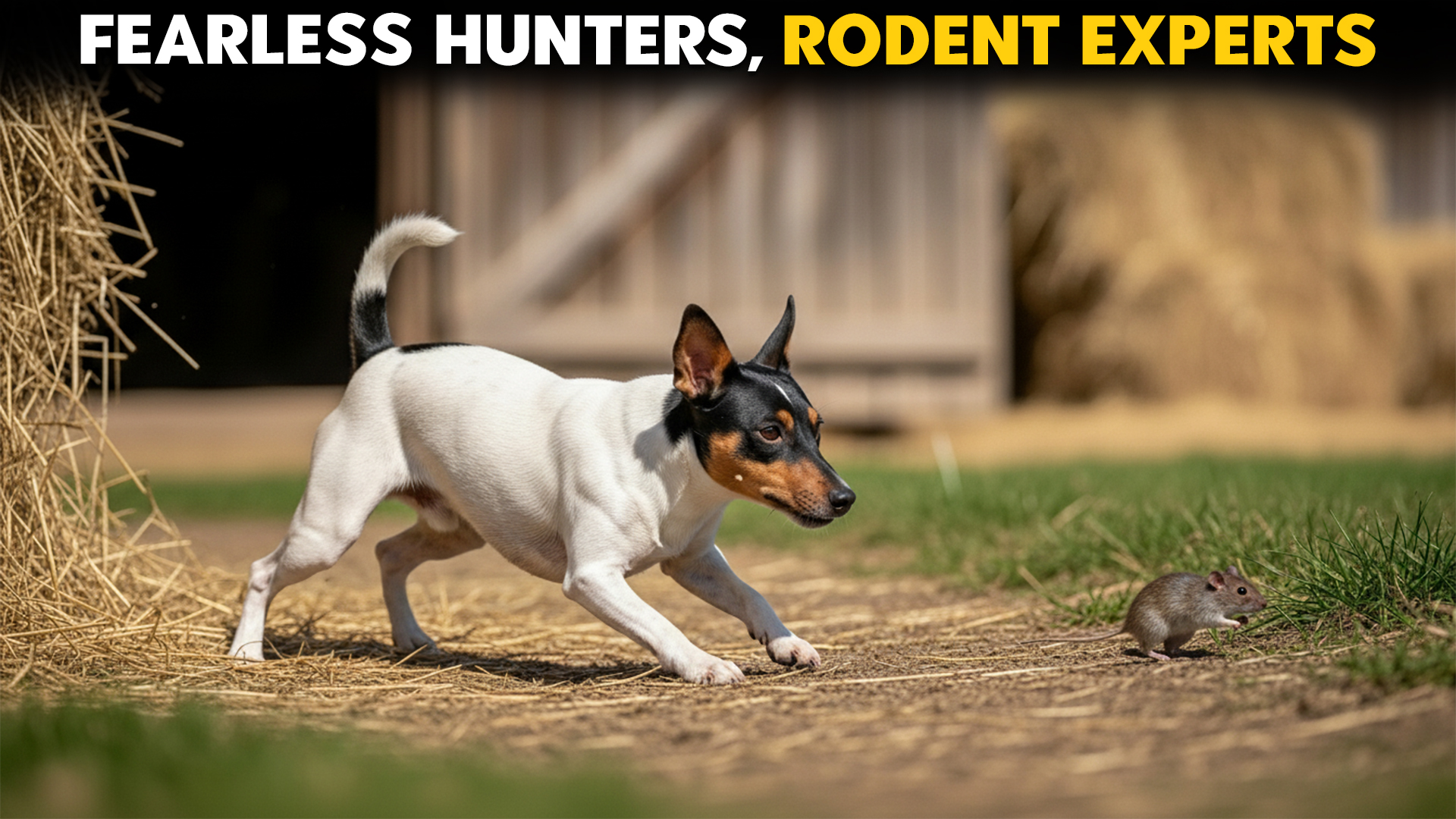Rats destroy everything on farms. They eat grain, damage wood, and spread disease fast. Poison sometimes works. Traps catch only a few. But nothing stops rodents like a dog that actually hunts them.
Farmers have known this for centuries. They bred dogs specifically to hunt vermin. These were not random choices. Breeders carefully selected dogs for hunting rats and mice, and other vermin, over many generations. The result is a group of breeds with natural hunting skills that still work today
What makes these dogs special is their hunting drive. They see rodents and chase. They are fast enough to catch prey that most people never could. Many of these excellent ratters, often seen as companion dogs, also work as great family pets.
You need to understand what you’re getting. These dogs have instincts and a distinct personality. They’re bred to hunt and control the pest population. Here are nine proven breeds farmers and hunters have trusted for generations to keep pests under control.
Best Dog Breeds For Rodent Hunting
1. Rat Terrier
The Rat Terrier is an American breed created when farmers needed better hunters. Around 1900, breeders took hunting dogs from England and mixed them differently by region to enhance their effectiveness against other vermin.
Some crossed with Beagles for pack hunting. Others crossed with Whippets for speed. The result was a dog perfect for hunting small rodents. According to VCA, Rat Terriers were used for vermin control and rat-pit contests on farms.
Rat Terriers are very adaptable dogs. They do well in both apartments and houses. Their short coat needs very little grooming. Just brush them once a week. They bark less than most terriers, which makes them a good fit for homes with nearby neighbors.
Breed Highlights
Playful and energetic all day
Can jump five to six feet high
Small and easy to train
Dig constantly, looking for prey
Need daily exercise
Good with children and families
2. Jack Russell Terrier
Jack Russell Terriers were first bred in England during the 1800s for fox hunting. Reverend John “Jack” Russell wanted lively, quick dogs that could run alongside horses, follow foxes into their dens, and hunt small game.
The World Atlas notes that these Terriers could run at speeds of up to 38 miles per hour. That speed made them excellent at hunting small rodents, as well as being recognized as excellent ratters.
Jack Russells have a bossy personality. They want to be involved in everything you’re doing. Training needs to start early because they’ll test your patience. Once they learn the rules, they stick to them.
Distinctive traits
Extremely energetic and always active
Can be stubborn and independent
Need secure fencing to stay safe
Hunt mice and rats with determination
Require experienced owners
3. Yorkshire Terrier
The Yorkshire Terrier, or Yorkie, is a small toy-sized dog. They were originally bred to hunt mice and rats, able to squeeze into small spaces between machines to catch the rodents hiding inside.
Back in the 1850s, Yorkies had an interesting history and were a common sight in English cotton mills
According to the American Kennel Club, “Their vermin-hunting skills were also put to good use in the mills where their owners worked and the cramped housing where they slept.”
Yorkies are perfect for people who live in small spaces. They weigh just 4 to 7 pounds, so they don’t eat much, which helps keep feeding costs down. Even though they’re hunters, they stay calm indoors as long as they get enough exercise.
Notable attributes
Originally bred to hunt rodents in factories
Intelligent but stubborn about commands
Have a strong prey drive for small animals
Adapt well to apartment living
Need consistent training and boundaries
4. Cairn Terrier
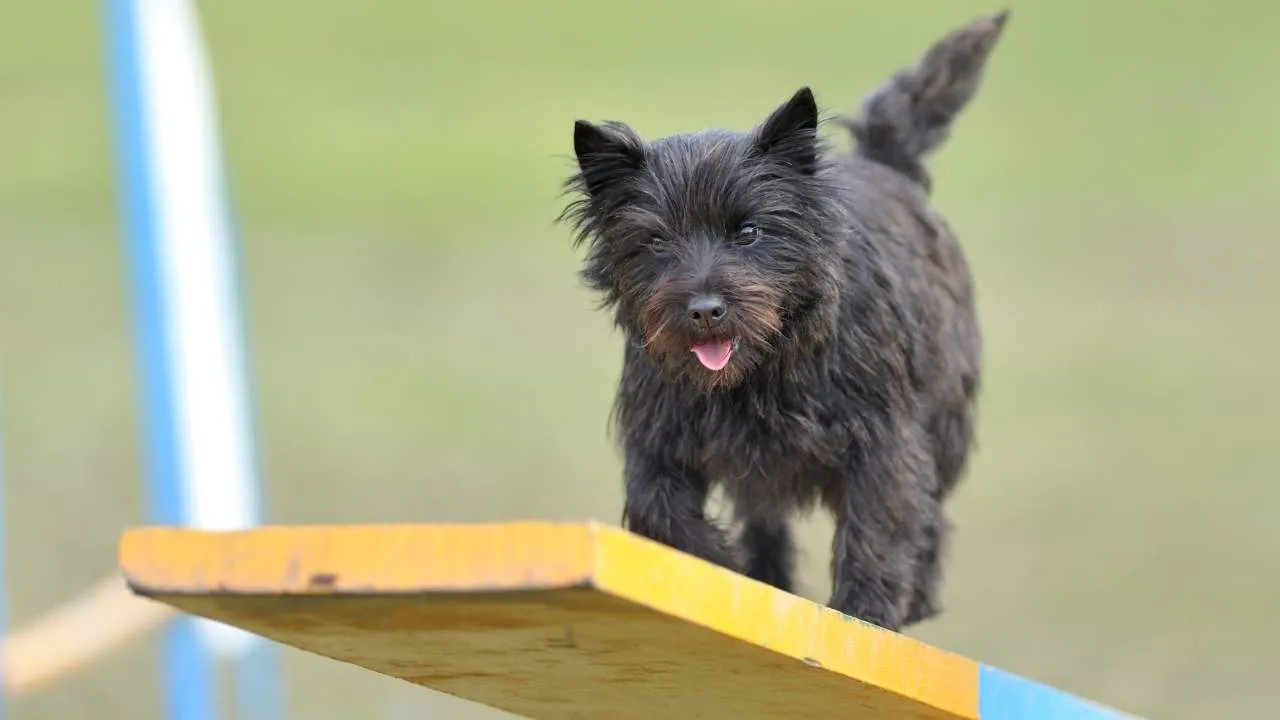
The Scottish Highlands bred Cairn Terriers centuries ago to hunt rats. Cairn means a pile of rocks where rodents live. Farmers needed dogs that could dig into rocks and catch prey. Sometimes, these dogs had to be brave working alone.
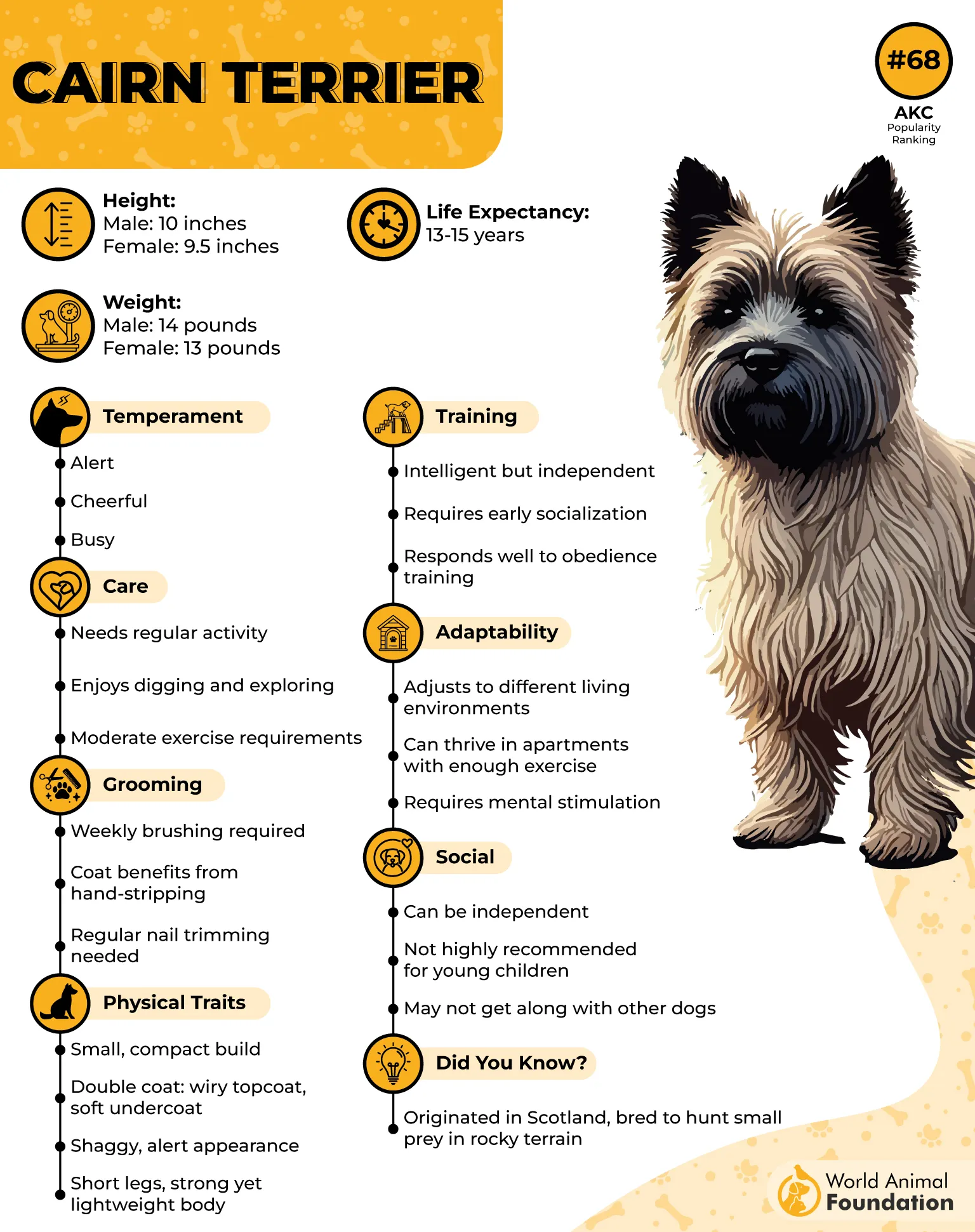
The AKC recognized the breed in 1913, and it experienced a boost in popularity after one played Toto in “The Wizard of Oz” movie. Cairn’s cheerful personality shines through, especially when given clear leadership.
These Terriers rarely get sick. They live 13 to 15 years on average. They are less aggressive with other dogs, which makes them easier to manage in public places.
Special features
Cheerful and loyal when owners lead firmly
Dig constantly, following hunting instincts
Respond to consistent firm training
Good with childrenLove outdoor activities and hiking
5. Miniature Schnauzer
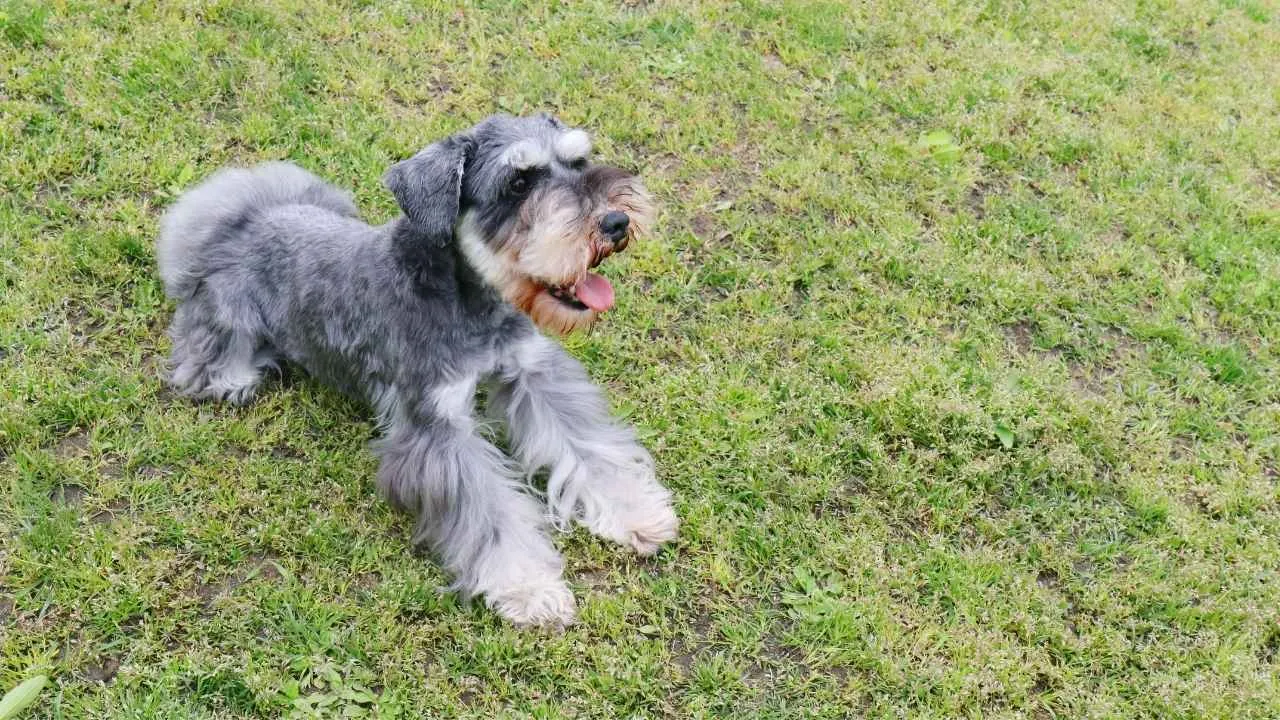
German farmers wanted a smaller dog to help around the farm, so they crossed Schnauzers with Pinschers and Poodles. That’s how the Miniature Schnauzer came to be.
With their busy eyebrows and beard, they may look cute and playful, but they’re actually sharp and skilled hunters. According to Vetstreet, “Miniature schnauzers are smart and athletic; they can shine in obedience and agility too, often regarded as excellent ratters.”
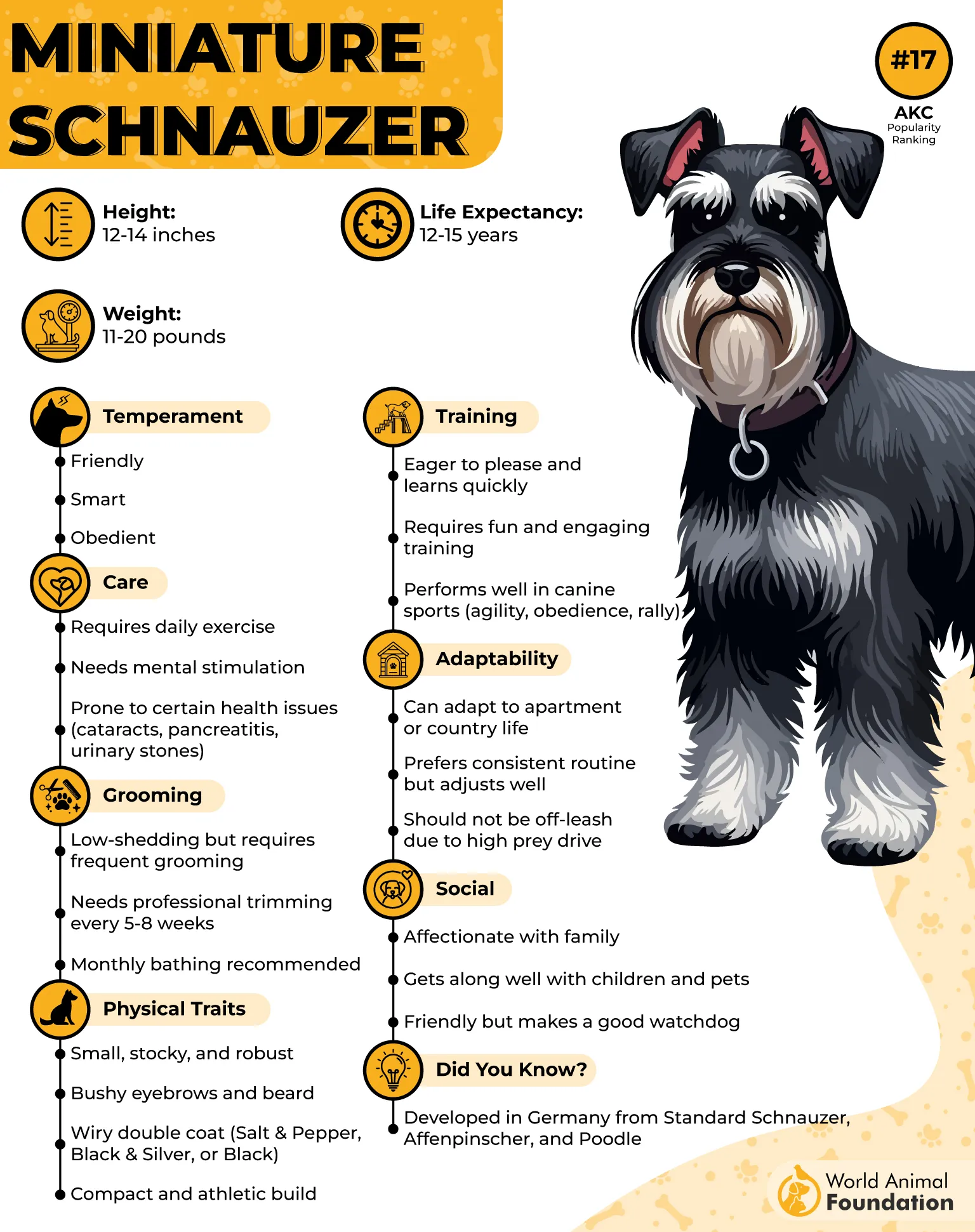
Miniature Schnauzers naturally become friendly with people, even strangers, once you properly introduce them. They stay calm in busy households with lots of activity.
Key Characteristics
Smart and eager to learn commands quickly
High prey drive means no loose outdoor time
Need professional grooming every 5 to 8 weeks
Adapt to apartments or houses equally well
Excel in dog sports and competitions
6. Manchester Terrier
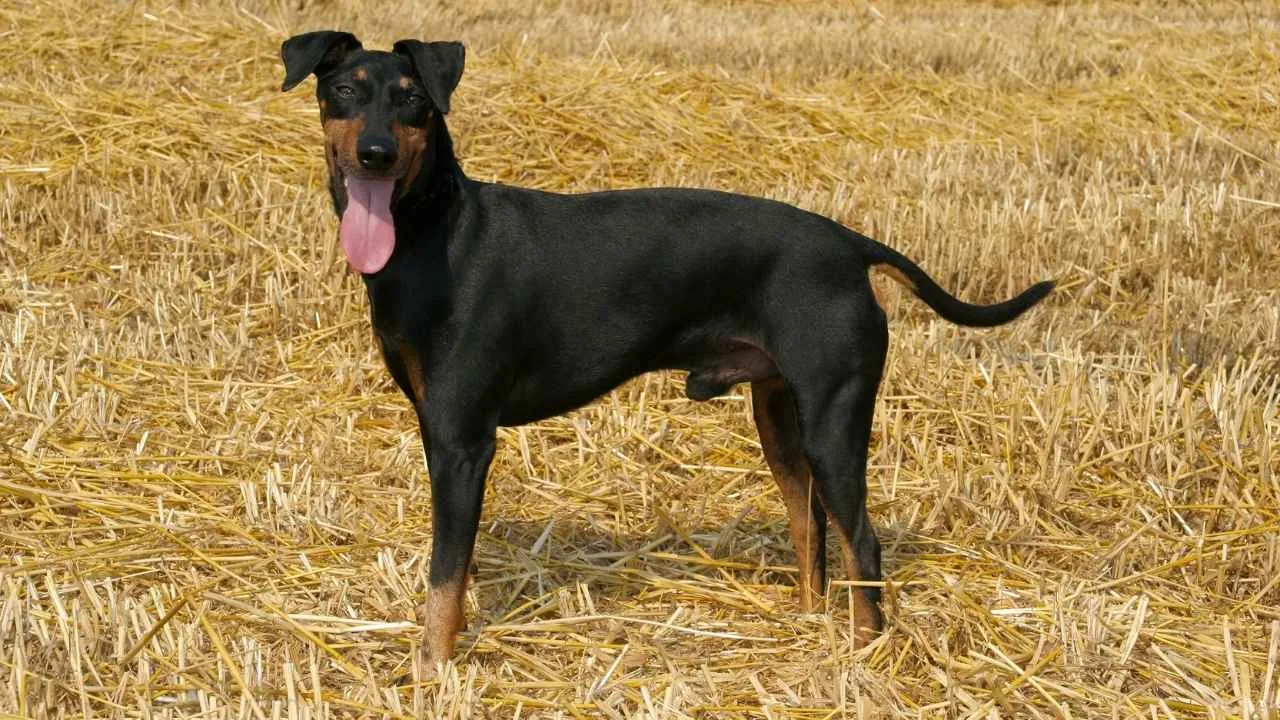
These dogs are quick enough to catch rats and rabbits, and they soon became famous for rat-baiting contests, where they had to catch rodents in small spaces.
Manchester Terriers come in two different sizes: the Standard and the Toy version. Their coats are black and tan. These dogs look athletic and lean. Both sizes hunt the same way, just with different prey sizes. Manchester Terriers need almost no grooming beyond occasional baths.
Since Manchester Terriers can be a bit cautious around strangers, start socializing your puppy as soon as you bring them home to help them grow into a confident, friendly adult.
Noteworthy facts
Need serious daily exercise and activity
Prone to barking and digging behaviors
Make good companions for busy people
Can have a high prey drive; supervision is a must
7. Norfolk Terrier
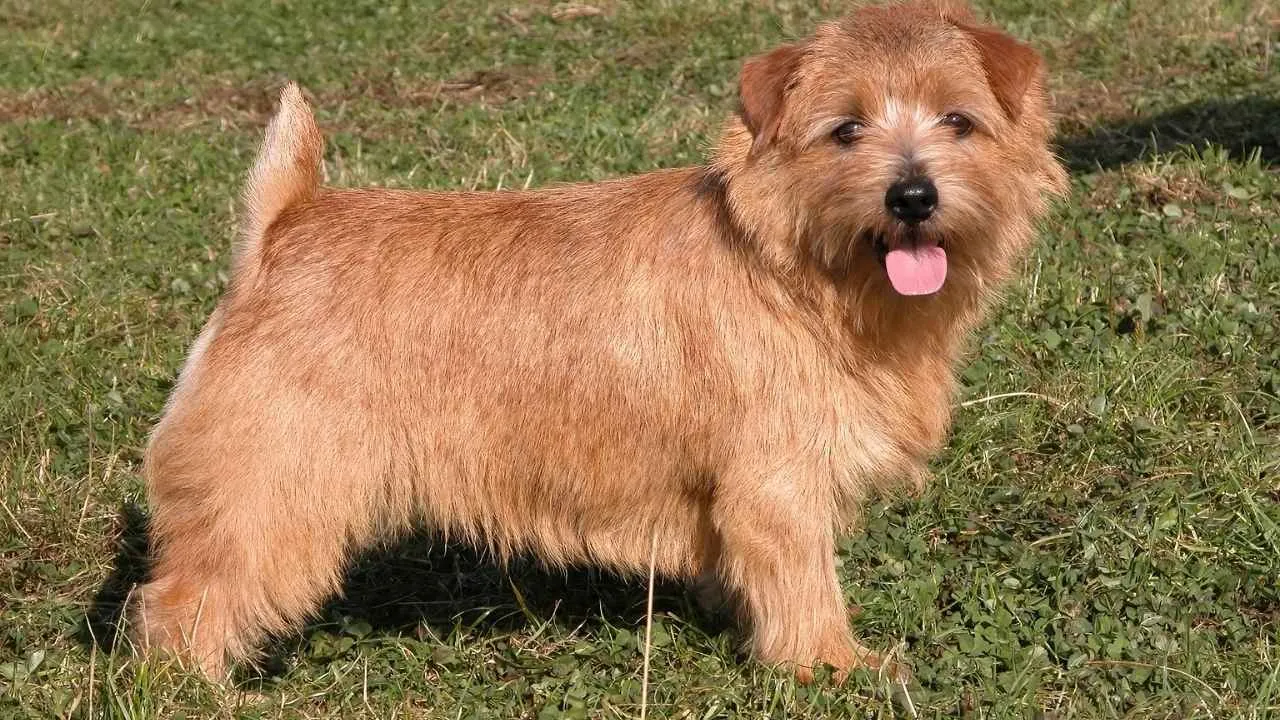
In the 1800s, Cambridge University students brought Norfolk Terriers to campus to tackle the school’s growing rat problem. The old buildings were overrun, but these little Terriers proved so effective at pest control that students affectionately nicknamed them “Cantab Terriers.”
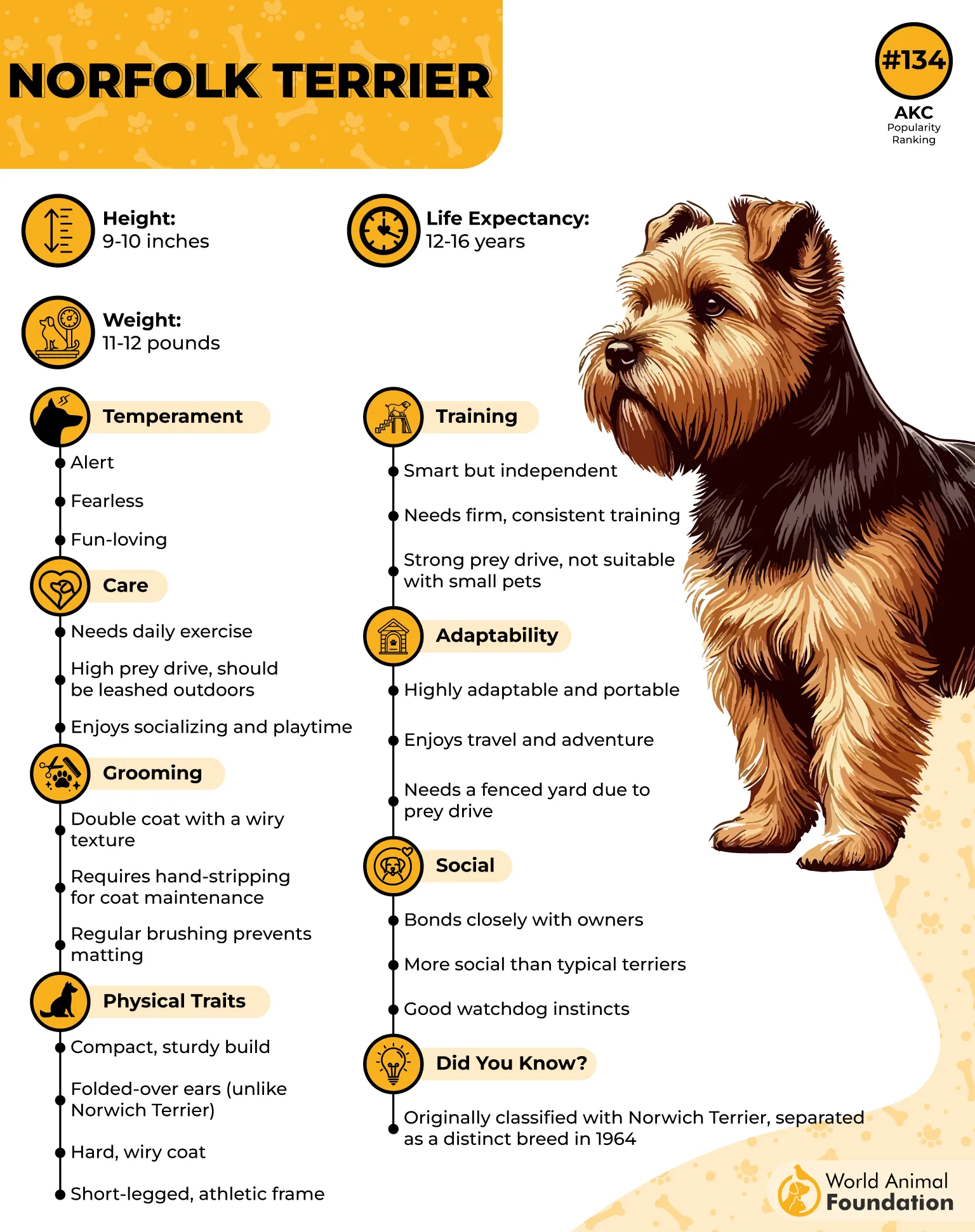
Norfolk Terriers came from crossing Border Terriers, Cairns, and Irish Terriers, whose parents were specifically bred for this purpose. Norfolk Terriers’ ears fold down unlike similar breeds. They are the most easygoing of all terrier breeds.
These small dogs show patience with gentle children. They rarely show aggression and prefer to avoid conflicts. This calm nature makes them suitable for first-time dog owners who want a hunting breed.
Special characteristics
More social than other Terriers
Bond closely with their owners
High prey drive requires secure fencing
Need daily exercise and mental stimulation
Alert watchdogs for families
8. Dachshund
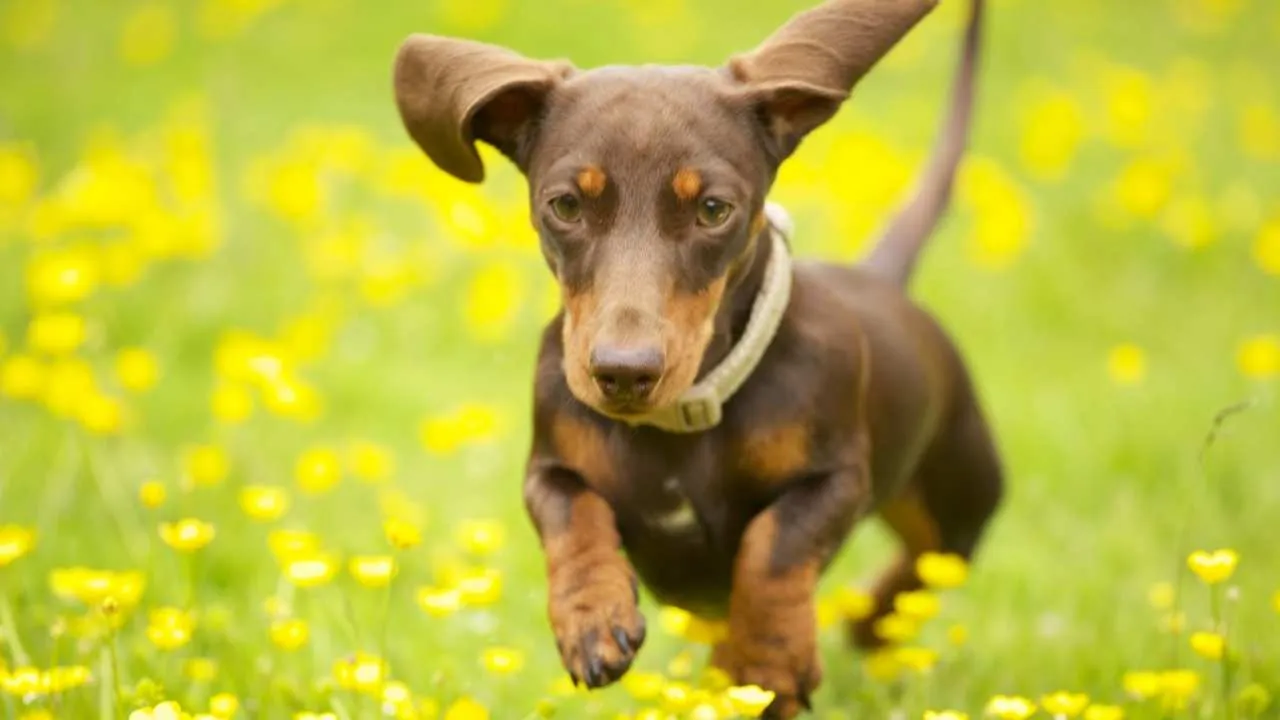
“Dachshund” means “badger dog.” They were bred to hunt badgers and burrowing animals like rabbits and rats. The Dachshund’s long body and short legs allow them to reach underground tunnels and holes to follow prey.
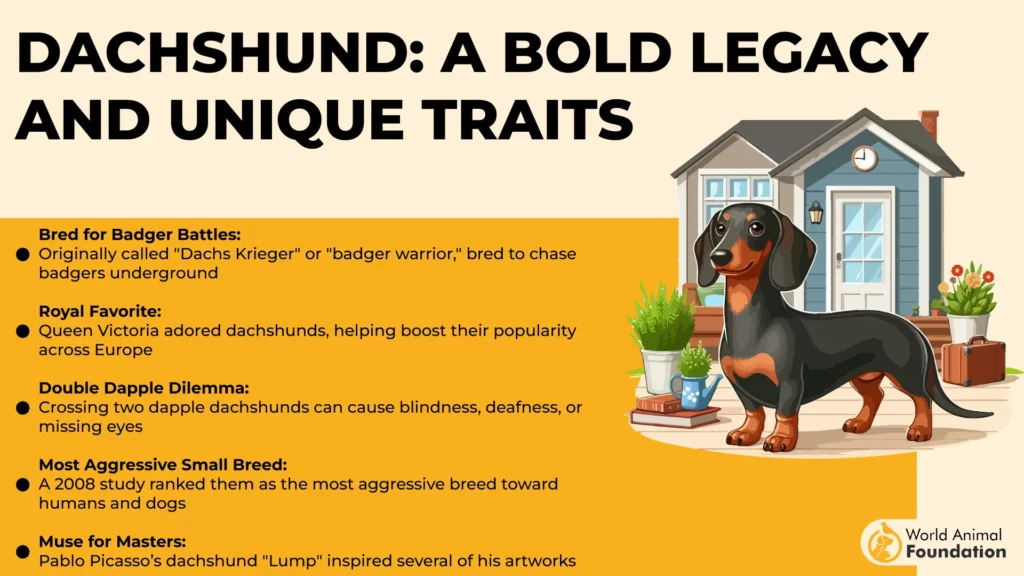
Dachshunds come in two sizes: Standard and Miniature. They come in three coat types: Smooth, wirehaired, and longhaired. Each coat was designed for different hunting conditions. Wirehaired coats worked in the thorny brush, while long-haired coats kept dogs warm in cold weather.
Dachshunds were bred to hunt on their own, which makes them brave and sometimes a little stubborn. Their playful personality and unique long, low body have made them one of the most loved dog breeds in the U.S.
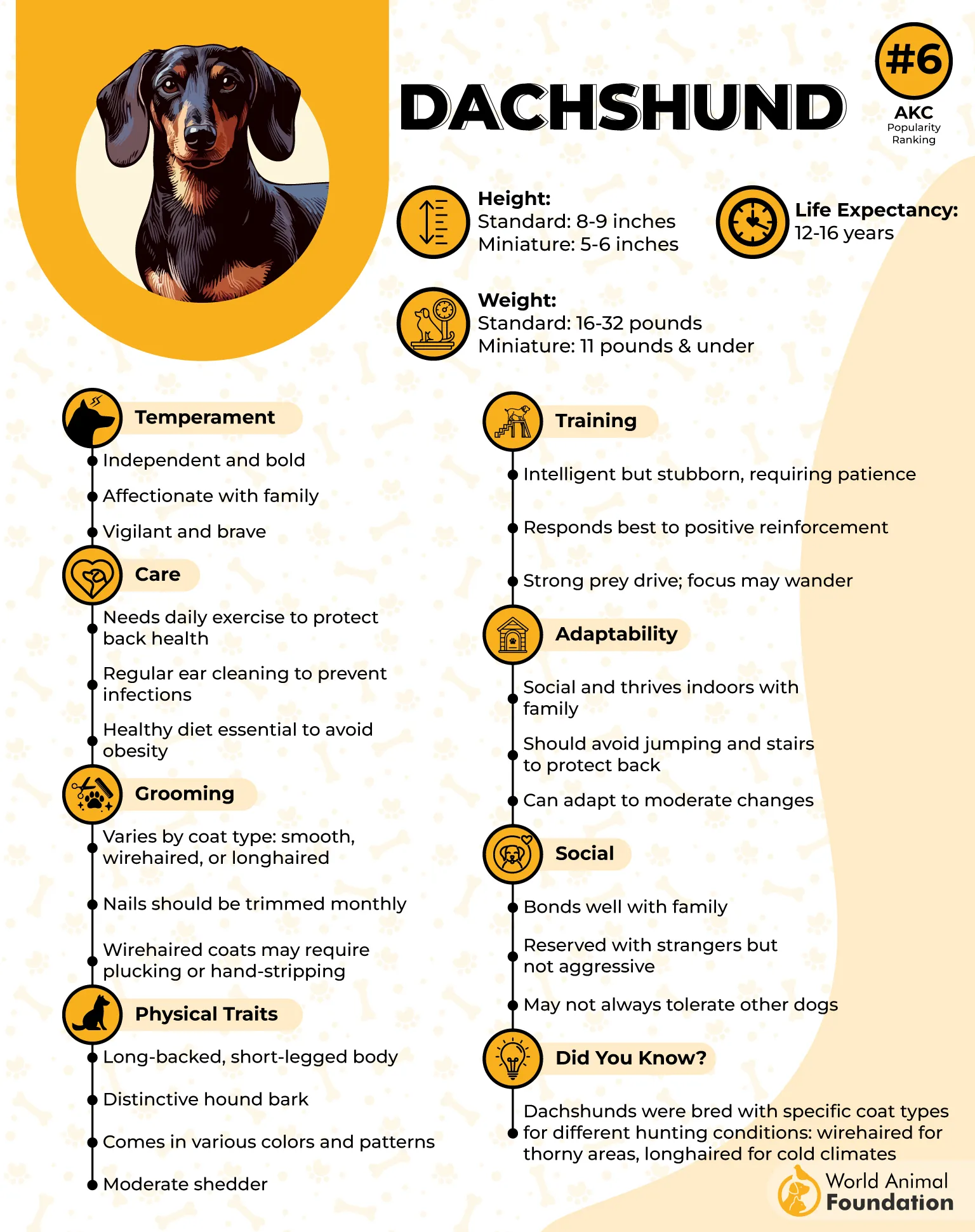
Unique Traits
Stubborn and independent, but very loyal
Have a strong prey drive that stays active
Dig constantly, following hunting instincts
Need patient training and firm leadership
Quiet dogs that don’t bark excessively.
9. Lakeland Terrier
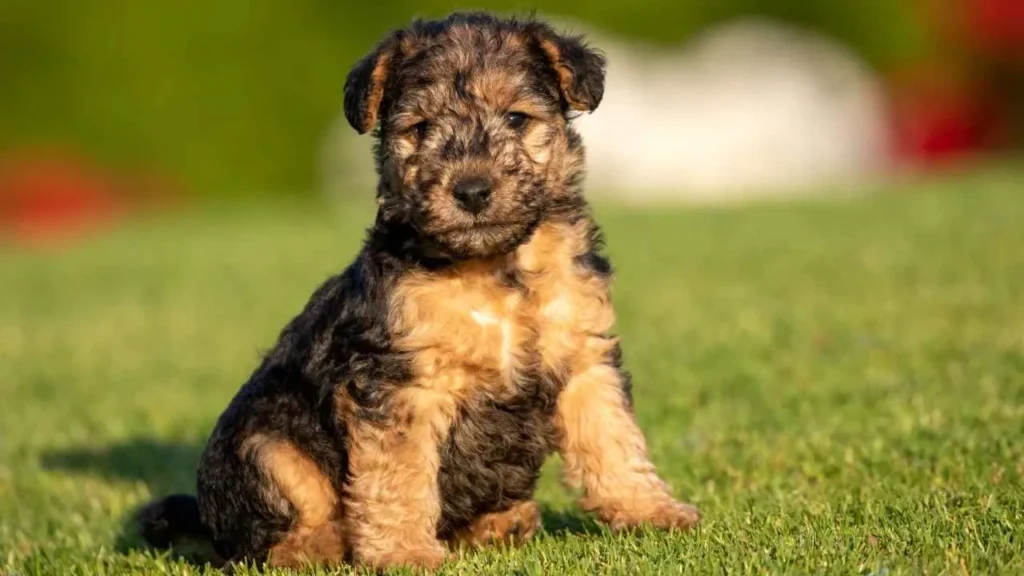
Farmers in England’s Lake District bred Lakeland Terriers in the 1700s. They needed small, brave dogs to guard sheep and chase other rodents in the rough hills. These terriers were full of high energy and worked hard every day.
They often worked in pairs or small groups and are great outdoor and hiking companions. Their mood stays steady, and they’re easy to handle.
Lakeland Terriers are confident but not aggressive. They do well alone or with other dogs. They’re curious by nature, always exploring and watching everything around them.
Distinct Qualities
Hunt small rodents with real determination
Respond well to training and attention
Need daily exercise to stay active
Have a wired coat that sheds minimally
Conclusion
Choosing the right hunting dogs means understanding what each breed does best. Some hunt better than others. Some need more space. Some adapt to cities better, such as tan terriers.
What they all share is hundreds of years of breeding to hunt vermin, including Fox Terriers and other specialized breeds. The instinct is hardwired into their DNA, allowing them to reach places that other breeds may not. You can’t train it away or breed it out.
These breeds make decent family pets when owners know what they’re getting. They need exercise, and they need jobs. Without these things, they become a handful. With proper training and care, they become loyal companions and skilled hunters both.


